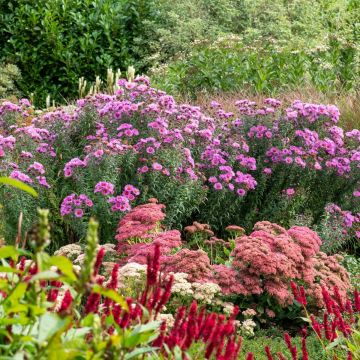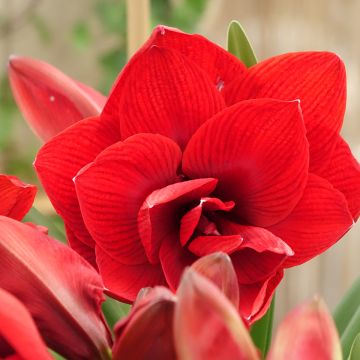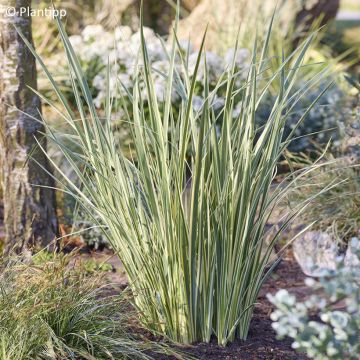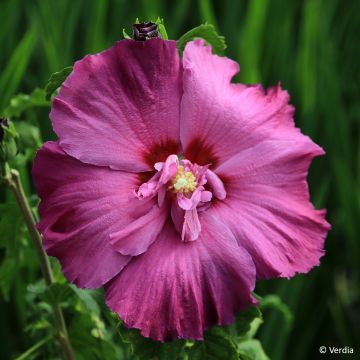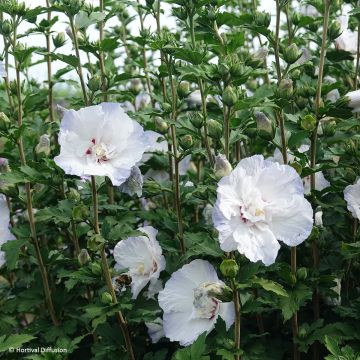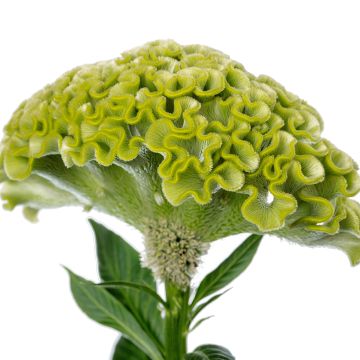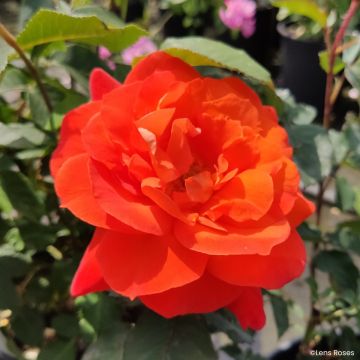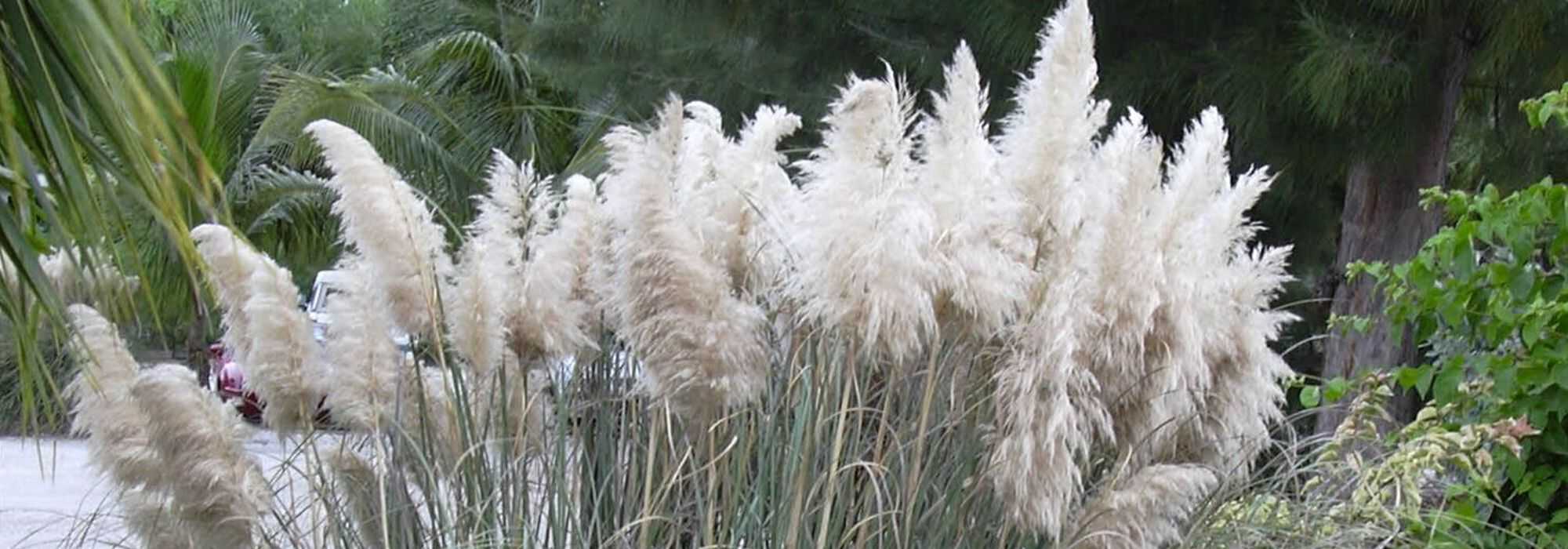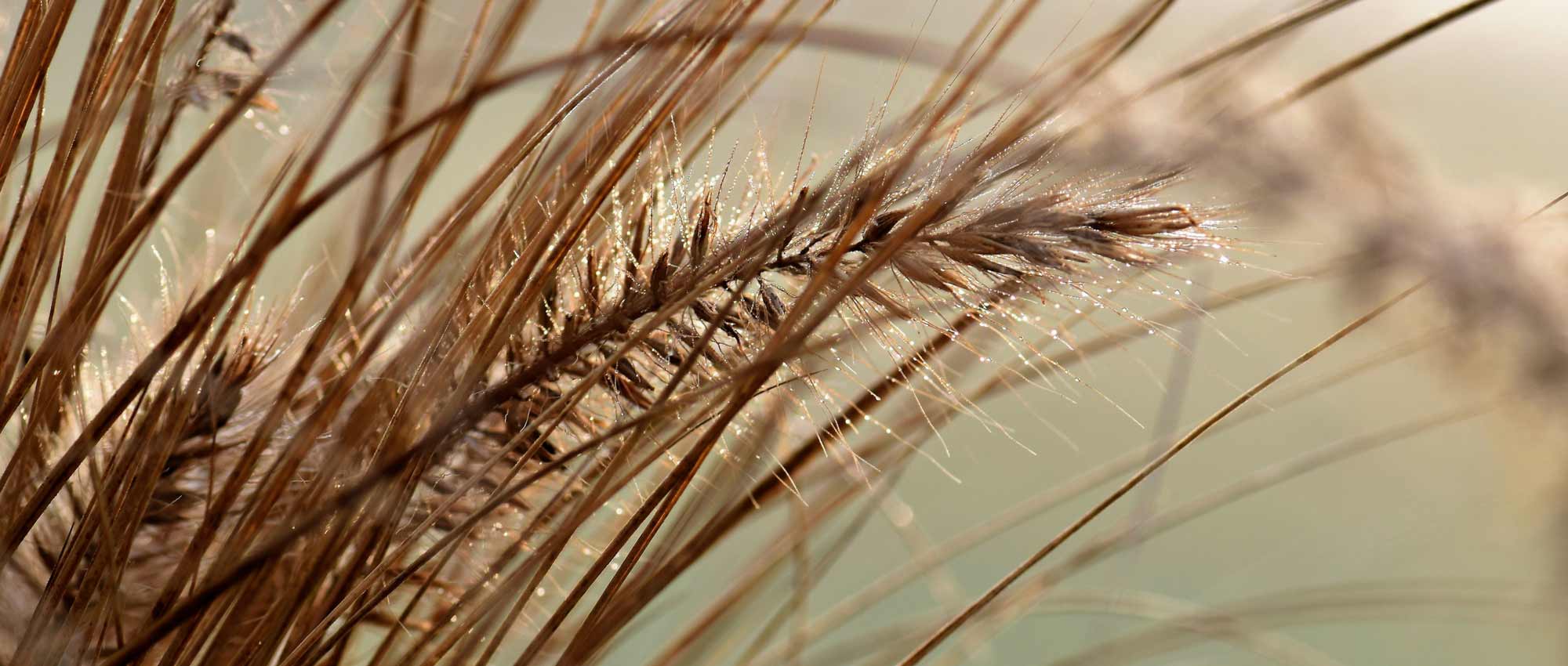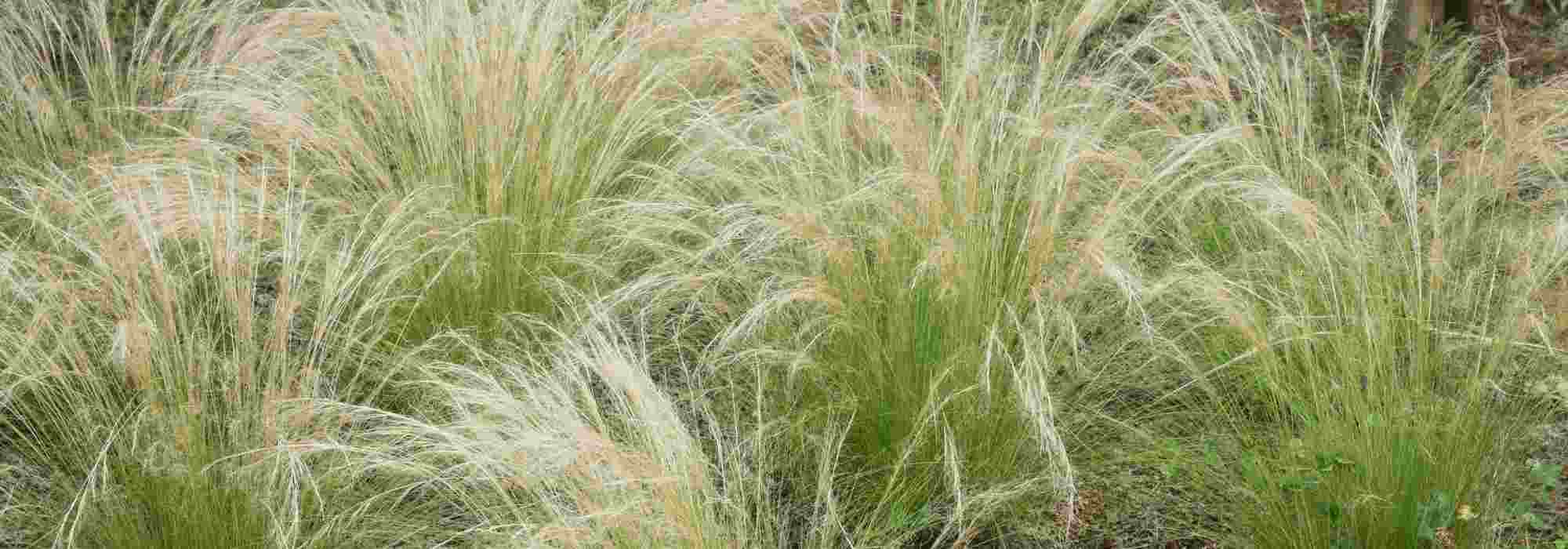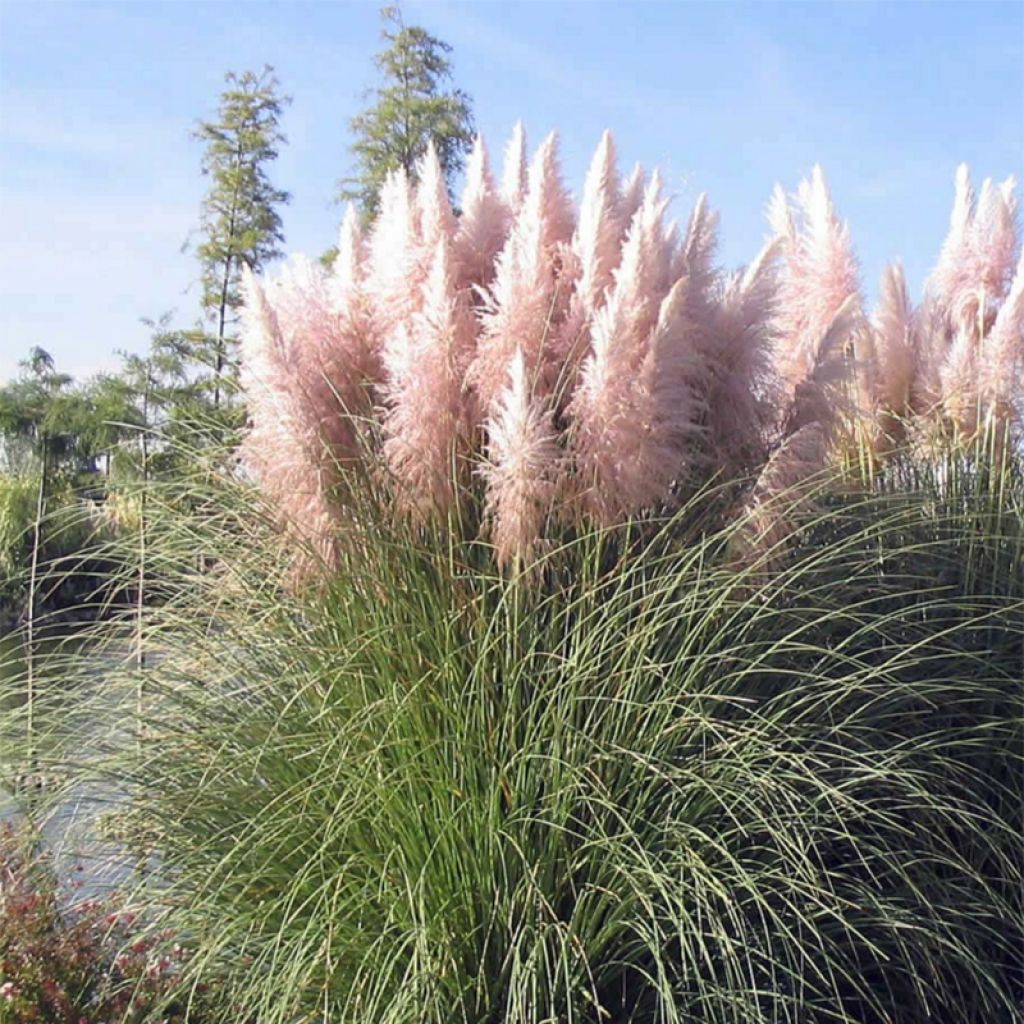

Cortaderia selloana Rosea - Pink Pampas Grass
Cortaderia selloana Rosea - Pink Pampas Grass
Cortaderia selloana Rosea
Pampas Grass
after 7 months of thriving, delighted
Gilles , 11/09/2024
Special offer!
Receive a €20 voucher for any order over €90 (excluding delivery costs, credit notes, and plastic-free options)!
1- Add your favorite plants to your cart.
2- Once you have reached €90, confirm your order (you can even choose the delivery date!).
3- As soon as your order is shipped, you will receive an email containing your voucher code, valid for 3 months (90 days).
Your voucher is unique and can only be used once, for any order with a minimum value of €20, excluding delivery costs.
Can be combined with other current offers, non-divisible and non-refundable.
Why not try an alternative variety in stock?
View all →This plant carries a 12 months recovery warranty
More information
We guarantee the quality of our plants for a full growing cycle, and will replace at our expense any plant that fails to recover under normal climatic and planting conditions.
Would this plant suit my garden?
Set up your Plantfit profile →
Description
IMPORTANT: for the preservation of our natural ecosystems, we have removed this plant from our catalogue as it is considered invasive. Therefore, it is no longer available for sale.
Cortaderia selloana 'Rosea', better known as Pampas Grass, is a pink version of this imposing evergreen grass. It produces remarkable feathery and silky panicles in late summer, with a lovely shade of light pink, which take on very soft silver reflections under the low autumn light. This fairly hardy perennial, resistant to wind, is easy to grow in full sun, in ordinary soil, even poor, occasionally dry and saline.
Cortaderia selloana, also known as Gynerium or Cortaderia argentea, is a large and highly ornamental grass belonging to the Poaceae family. It is native to South America, specifically Argentina and Brazil, where it abundantly colonises the edges of roads and paths, stream banks, and fallow land by self-seeding. This plant is characterised by its great adaptability to the soil it grows in, even tolerating the semi-arid conditions of subtropical climates. It is a dioecious plant, meaning that there are male and female plants.
'Rosea' stands out from the typical species mainly because of its light pink flowering, but also because of a slightly less imposing habit. This grass forms a tuft of linear, evergreen foliage in mild climates, with sharp, tough, and rustling leaves, reaching a height of 1.80m (6ft) and a width of 80cm (32in) to 1 metre (3 feet), with a slightly arched habit. The leaves are bluish-green-grey. Its immense flower heads appear in late summer, in August-September, at the centre of the shrub, in the form of sumptuous pink-silvery feathery panicles, measuring 30 to 50 cm (12 to 20in) in length, which remain on the plant at least until November, fading over time. They are borne by sturdy, cylindrical stems that are highly resistant to wind. When both male and female individuals are present, the female plants produce a large quantity of seeds that are dispersed by the wind.
This large grass has been ubiquitous in our gardens since the 1960s. The only point that can perhaps be emphasised is the misuse that has been made of it. It is true that it looks a bit ridiculous when planted all alone, in the middle of a lawn, while it is so beautiful when used en masse or in a flower bed, among bushes. Cortaderia selloana Rosea indeed forms large clumps with a very exotic appearance, but it should not be planted in the garden without taking the time to reflect; its motto could well be: "I'm here, I'm staying!" This undemanding grass has the advantage of adapting to all gardens, except perhaps the smallest ones. Designed for large beds, its strong presence brings beautiful structure and a lot of grace, if given enough space to express itself. Plant it among asters, behind chrysanthemums or perpetual roses, and let it grow and expand. In a wild and tousled or modern and streamlined setting, watch it play with the wind and bend under rain showers. In urban areas, Pampas Grass blends in well with its pastel colours, rounding off corners without clashing. Magnificent when planted near water, they accompany vernonias in well-drained soil.
Attention: Pampas Grass is invasive in certain regions. Escaping from gardens, it colonises fallow land, sandy areas, and wetlands causing significant ecological disruption. If you live in an affected region, we recommend not planting it. It can be replaced by many other architectural grasses, such as Miscanthus.
Cortaderia selloana Rosea - Pink Pampas Grass in pictures
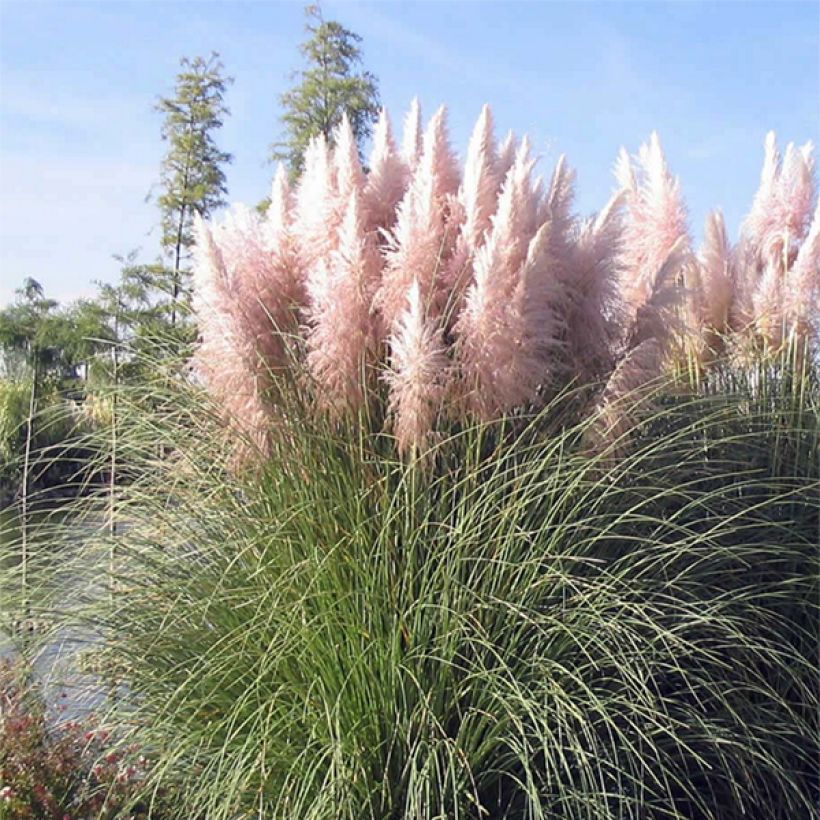



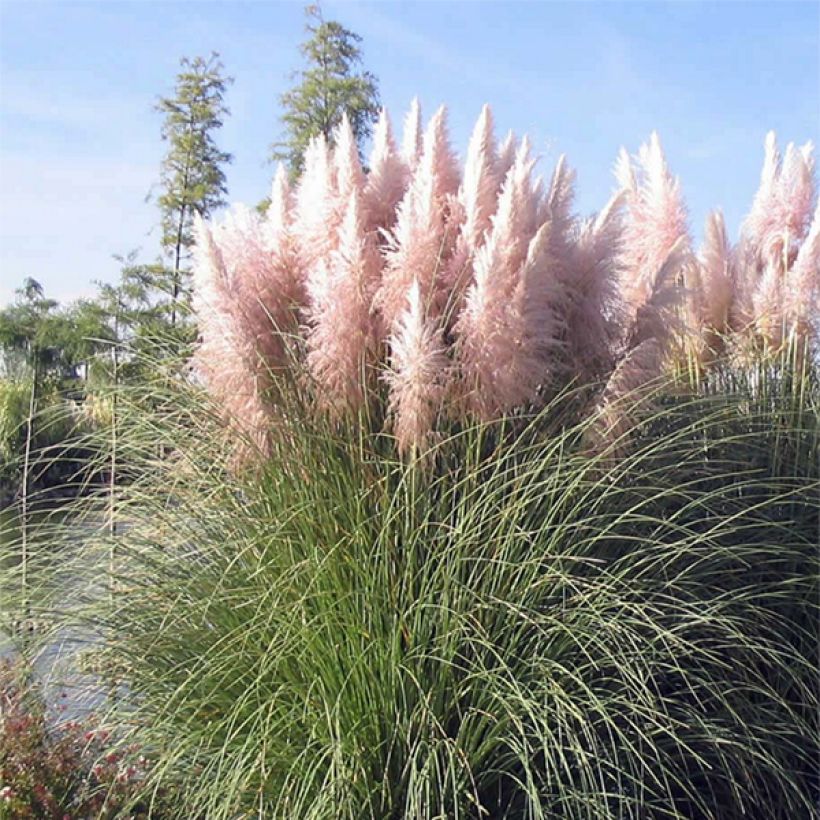

Flowering
Foliage
Plant habit
Botanical data
Cortaderia
selloana
Rosea
Poaceae
Pampas Grass
South America
Planting and care
Cortaderia selloana 'Rosea' appreciates above all good sunlight. Place it ideally in fairly rich, fresh but very well-drained soil. However, it will be content with poor and mediocre soil, but dislikes heavy and compact soils, waterlogged in winter. Easy to grow, protect it from excessive winter humidity as it cannot tolerate stagnant water. Water abundantly after planting. Then, water regularly during the first year. At the end of winter (March to April), cut the dead leaves but do not cut back all the foliage to the ground. Be careful, the leaves are sharp, it is better to protect your hands with thick gloves. While a young plant may not tolerate intense cold, Pampas grass gains hardiness with age. A well-established plant will withstand a minimum of -15°C (5°F). In cold regions, plant it in a sheltered location, in well-draining soil, preferably in spring.
Planting period
Intended location
Care
Planting & care advice
-
, onOrder confirmed
Reply from on Promesse de fleurs
Haven't found what you were looking for?
Hardiness is the lowest winter temperature a plant can endure without suffering serious damage or even dying. However, hardiness is affected by location (a sheltered area, such as a patio), protection (winter cover) and soil type (hardiness is improved by well-drained soil).

Photo Sharing Terms & Conditions
In order to encourage gardeners to interact and share their experiences, Promesse de fleurs offers various media enabling content to be uploaded onto its Site - in particular via the ‘Photo sharing’ module.
The User agrees to refrain from:
- Posting any content that is illegal, prejudicial, insulting, racist, inciteful to hatred, revisionist, contrary to public decency, that infringes on privacy or on the privacy rights of third parties, in particular the publicity rights of persons and goods, intellectual property rights, or the right to privacy.
- Submitting content on behalf of a third party;
- Impersonate the identity of a third party and/or publish any personal information about a third party;
In general, the User undertakes to refrain from any unethical behaviour.
All Content (in particular text, comments, files, images, photos, videos, creative works, etc.), which may be subject to property or intellectual property rights, image or other private rights, shall remain the property of the User, subject to the limited rights granted by the terms of the licence granted by Promesse de fleurs as stated below. Users are at liberty to publish or not to publish such Content on the Site, notably via the ‘Photo Sharing’ facility, and accept that this Content shall be made public and freely accessible, notably on the Internet.
Users further acknowledge, undertake to have ,and guarantee that they hold all necessary rights and permissions to publish such material on the Site, in particular with regard to the legislation in force pertaining to any privacy, property, intellectual property, image, or contractual rights, or rights of any other nature. By publishing such Content on the Site, Users acknowledge accepting full liability as publishers of the Content within the meaning of the law, and grant Promesse de fleurs, free of charge, an inclusive, worldwide licence for the said Content for the entire duration of its publication, including all reproduction, representation, up/downloading, displaying, performing, transmission, and storage rights.
Users also grant permission for their name to be linked to the Content and accept that this link may not always be made available.
By engaging in posting material, Users consent to their Content becoming automatically accessible on the Internet, in particular on other sites and/or blogs and/or web pages of the Promesse de fleurs site, including in particular social pages and the Promesse de fleurs catalogue.
Users may secure the removal of entrusted content free of charge by issuing a simple request via our contact form.
The flowering period indicated on our website applies to countries and regions located in USDA zone 8 (France, the United Kingdom, Ireland, the Netherlands, etc.)
It will vary according to where you live:
- In zones 9 to 10 (Italy, Spain, Greece, etc.), flowering will occur about 2 to 4 weeks earlier.
- In zones 6 to 7 (Germany, Poland, Slovenia, and lower mountainous regions), flowering will be delayed by 2 to 3 weeks.
- In zone 5 (Central Europe, Scandinavia), blooming will be delayed by 3 to 5 weeks.
In temperate climates, pruning of spring-flowering shrubs (forsythia, spireas, etc.) should be done just after flowering.
Pruning of summer-flowering shrubs (Indian Lilac, Perovskia, etc.) can be done in winter or spring.
In cold regions as well as with frost-sensitive plants, avoid pruning too early when severe frosts may still occur.
The planting period indicated on our website applies to countries and regions located in USDA zone 8 (France, United Kingdom, Ireland, Netherlands).
It will vary according to where you live:
- In Mediterranean zones (Marseille, Madrid, Milan, etc.), autumn and winter are the best planting periods.
- In continental zones (Strasbourg, Munich, Vienna, etc.), delay planting by 2 to 3 weeks in spring and bring it forward by 2 to 4 weeks in autumn.
- In mountainous regions (the Alps, Pyrenees, Carpathians, etc.), it is best to plant in late spring (May-June) or late summer (August-September).
The harvesting period indicated on our website applies to countries and regions in USDA zone 8 (France, England, Ireland, the Netherlands).
In colder areas (Scandinavia, Poland, Austria...) fruit and vegetable harvests are likely to be delayed by 3-4 weeks.
In warmer areas (Italy, Spain, Greece, etc.), harvesting will probably take place earlier, depending on weather conditions.
The sowing periods indicated on our website apply to countries and regions within USDA Zone 8 (France, UK, Ireland, Netherlands).
In colder areas (Scandinavia, Poland, Austria...), delay any outdoor sowing by 3-4 weeks, or sow under glass.
In warmer climes (Italy, Spain, Greece, etc.), bring outdoor sowing forward by a few weeks.






























